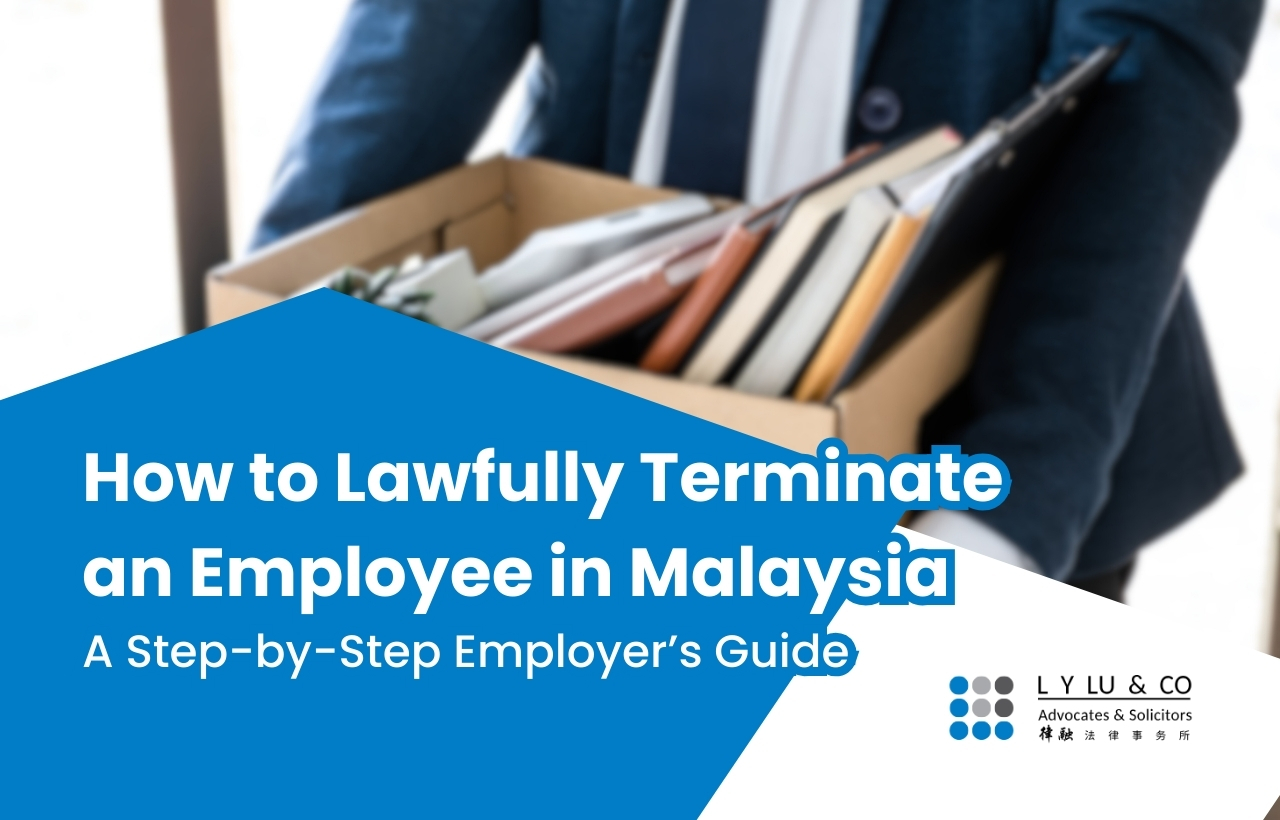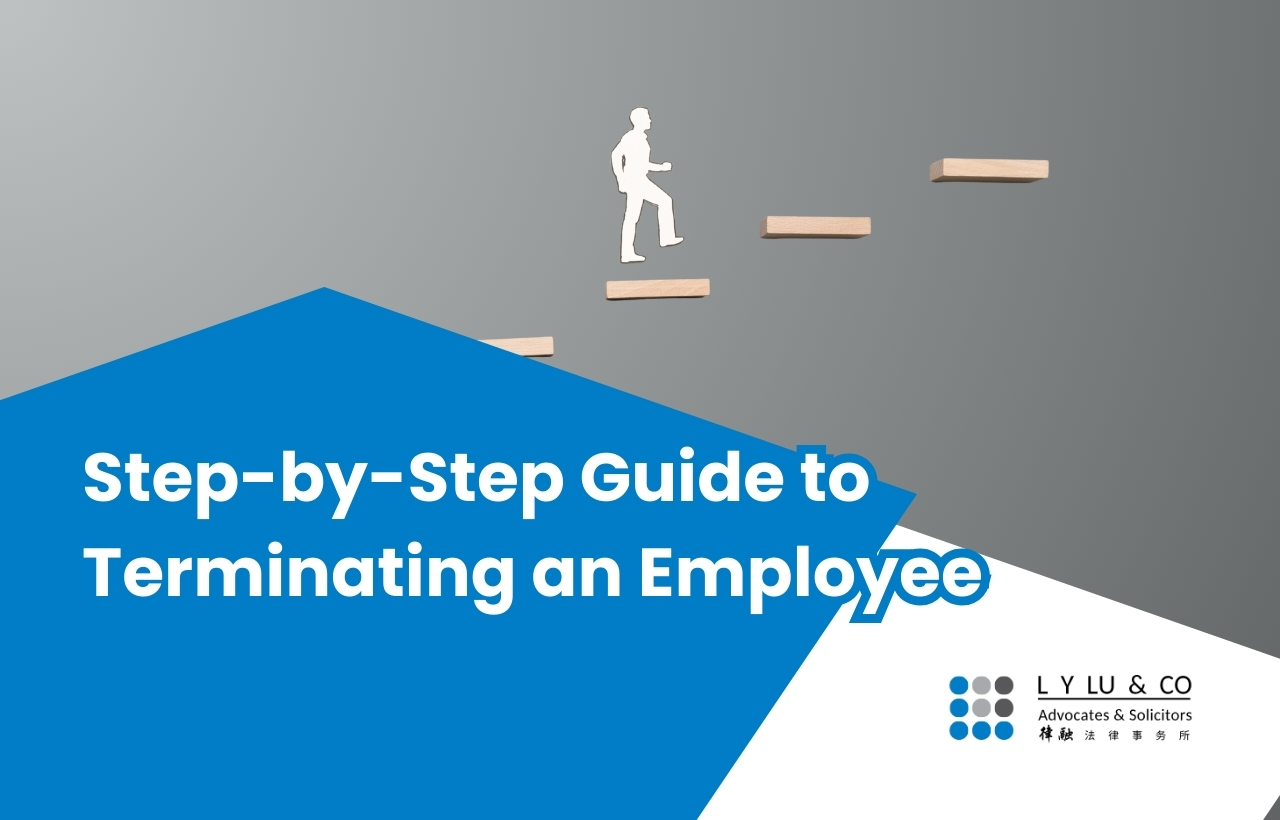1. Establish Legal Grounds for Termination
Before taking any action, the employer must determine whether there are legitimate, lawful grounds for termination. Under Malaysian employment law, valid reasons may include:
- Misconduct
- e.g. insubordination, theft, harassment, absenteeism.
- Poor performance
- Consistent underperformance despite training or warnings.
- Redundancy or Retrenchment
- Due to restructuring, downsizing, or financial constraints.
- Breach of contract
- Violation of specific employment terms.
Under the Employment Act 1955, these reasons must be genuine and justifiable. Termination without cause or excuse could be construed as unfair dismissal, giving the employee the right to seek redress under the Industrial Relations Act 1967.
2. Conduct Preliminary Investigation
When employee misconduct or performance issues arise, the employer must conduct a discreet preliminary investigation. This involves gathering evidence, reviewing records, speaking to relevant witnesses, and documenting the findings. The purpose is to confirm whether there is a basis for concern before proceeding with formal disciplinary action.
Investigations should be conducted professionally and fairly, maintaining confidentiality to avoid unnecessary workplace disruption.
3. Issue a Show Cause Letter
If the preliminary findings support further action, the next step is to issue a Show Cause Letter. This letter outlines the alleged wrongdoing and invites the employee to provide a written explanation within a specified timeframe (typically 24–72 hours).
The Show Cause Letter serves as a crucial procedural safeguard—it gives the employee a chance to be heard and ensures that disciplinary action is not taken prematurely.
4. Evaluate the Employee’s Reply
Upon receiving the employee’s explanation, the employer must evaluate the employee's reply objectively. If the reason is satisfactory and credible, disciplinary action may be dropped or downgraded (e.g. verbal warning). However, further steps are warranted if the response is evasive, incomplete, or inconsistent with evidence.
A poor reply may justify escalation to a formal domestic inquiry process.
5. Serve a Letter of Charge
If the employee’s explanation is unsatisfactory, a letter of charge should be issued. This formal document outlines the specific misconduct or performance issues and informs the employee that a Domestic Inquiry (DI) will be conducted to determine the truth of the allegations.
The Letter of Charge must be specific, stating the date, nature of the offence, and expected DI schedule.
6. Suspension Pending Inquiry
To ensure a fair and unbiased inquiry process, the employer may suspend the employee with pay pending the outcome of the domestic inquiry. Suspension helps avoid interference with witnesses or tampering with evidence.
Suspension is not a punishment but a protective measure for both parties and should be communicated.
7. Conduct a Domestic Inquiry (DI)
To conduct a Domestic Inquiry is a formal internal hearing chaired by a neutral panel. The employee must be allowed to:
- Be heard
- Call witnesses
- Review evidence
- Be represented (by a colleague or union representative)
The panel will review all materials, question both parties, and produce a written report on whether the allegations are proven.
Although the Code of Conduct for Industrial Harmony 1975 is not legally binding, Industrial Courts frequently refer to it as best practice. Failure to conduct a fair inquiry may render a dismissal procedurally unfair even if the misconduct is proven.
8. Make a Final Decision
After receiving the DI findings, management must decide whether to:
- Dismiss the employee
- Impose lesser punishment (e.g. demotion, final warning)
- Reinstatement if allegations are not proven
The decision must be reasonable, proportionate to the nature of the misconduct, poor performance, redundancy, or breach of contract, and firmly supported by the DI findings.
9. Issue the Termination Letter
If dismissal is decided, a formal Termination Letter must be issued. This letter should state:
- The reason(s) for termination
- Effective date
- Final salary and benefits payable
- Right to appeal (if any)
Clear documentation of the reasons for dismissal, whether due to misconduct, poor performance, redundancy or breach of contract, is critical at this stage to protect the employer from legal challenges.
10. Final Settlement and Clearance
Once the employee has been terminated, the company must complete all final settlements, including:
- Payment of salary, accrued leave, and contractual entitlements
- Final contributions to EPF and SOCSO
- Return of company property (laptop, access cards, uniforms)
- Issuance of EA Form for tax purposes
The Employees Provident Fund Act 1991 and the Employees Social Security Act 1969 require employers to ensure that all contributions are settled.
11. Handle Post-Termination Matters
Even after termination, employers should be prepared for potential follow-ups, such as:
- Employee appeals to Human Resources or management
- Conciliation via the Department of Industrial Relations (JPP)
- Unfair dismissal claim under Section 20 of the Industrial Relations Act 1967
If the case proceeds to the Industrial Court, the employer must provide comprehensive documentation to defend the decision.

